Playing Final Fantasy VII (FFVII) was the reason I bought my very first PlayStation console, so for me, it was an emotional experience to play FFVII Remake. For this title, I received a digital review copy, courtesy of Sony Interactive Entertainment on the PlayStation 4.
Released in 1997 on the first PlayStation console, and then subsequently on PC a year after, the original FFVII was hailed as one of the best JRPGs (Japanese role-playing game) that made the genre so popular outside of Japan.
What made FFVII so outstanding was its fantastic story and themes, an amazing soundtrack, as well as truly memorable characters. So how does FFVII Remake stack up?
A treat for fans
For a start, FFVII Remake only covers the FFVII story within Midgar, a fictional city that was only a short chapter in the original game, so there will be plenty more installments before the entire story is told. This probably also means the full game might require quite a lot of investment in time and money.
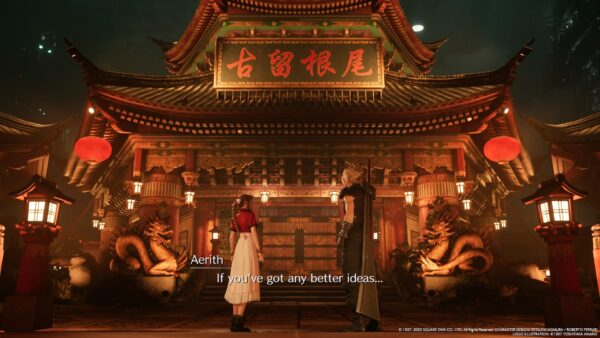
Despite focusing only on Midgar, FFVII Remake is by no means a short game. Comprising 18 chapters, the whole game took me about 45 hours to complete.
This includes multiple attempts at boss battles, all the running back and forth for side quests, and getting lost in the deliberately monotonous and similar looking mazes.
Although the developers have stressed that FFVII Remake is a fuller expansion of the original game, I don’t think all the additional content is all that pertinent.
I do think it’s nice to have more time and opportunity to explore places like Wall Market and the slums where there are people to talk to but not the long walks across the map.
FFVII Remake has retained the main characters and expanded on the story, improved the combat system and thrown in a whole bunch of new challenges and bosses.
Comparing the original FFVII and the Remake, you see that the cinematography for some of the iconic scenes have been preserved, much to the joy of fans of the original.
I suspect the next installment of Remake will differ quite a bit from the original as some supporting characters that should have ended their part of their story in the original at this point seem to be continuing their story in Remake.
For nostalgia’s sake, here’s how the original FFVII menu on the PC looks, next to the menu in Remake. There’s just so much more detail of the characters to admire!

A deep and complex tale
What is particularly memorable about the original FFVII is the story that wove in complex themes like social divide, profiteering conglomerates and the dilemma of saving the planet at the cost of progress.
For those unfamiliar with the story, the protagonist is Cloud Strife, a surly and morose mercenary who used to be a Soldier, an elite warrior unit in Shinra.
He was enlisted by Tifa, a childhood friend well versed in fisticuffs, to join a group of eco-warriors known as Avalanche. Their mission was to bring down the Shinra conglomerate that was destroying the planet by using mako, a non-renewable life force, to generate power and profits at a cost to the environment and the general population.
Together with Barrett, the hot-headed giant of a man with a gatling gun for his right hand, Cloud and Tifa form the main party in the game. Supported by other members of Avalanche in the familiar forms of Biggs, Jessie and Wedge, they bash their way through Shinra’s forces to blow up Mako reactors in Midgar.
They are later joined by the sweet and kind-hearted flower girl Aerith, who possesses strong magical skills and a mysterious past.
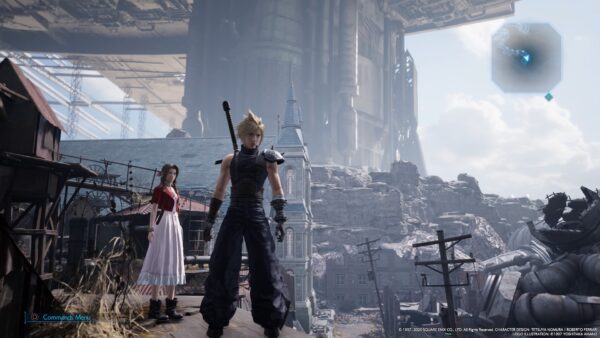
Set in the dystopian and highly industrialised world of Midgar, which is built up on a plate divided into sectors, FFVII Remake portrays a world where the elites live on the top of the plate while the oppressed masses live in the slums below.
With mako reactors owned by Shinra generating power, profits and a better life for the elite while creating artificial lighting and channelling polluted air to the slums below, it draws a disturbing parallel to our real world.
Exploring Midgar
In terms of gameplay, FFVII Remake offers lots more to explore in Midgar. Much like the original, FFVII Remake restricts the party’s movements through fixed paths – any unneeded deviation and the game will stop you with a “warning” icon.
With a lot more NPCs (non-player characters) populating Midgar in FFVII Remake, you can wander around and eavesdrop on conversations that the general populace is having. But if you listen to them long enough, they will start spouting the same lines.
The biggest problem I have with FFVII Remake is the unnecessarily sinuous paths that you need to take to get from one place to another in the early part of the game, which dilute the plot and mess up the pacing of the game.
Although they do allow Cloud to spend more time with the lovely Tifa and cutesy Aerith while walking about in the slums, this is a mixed bag. The walk from the church to Aerith’s home in Sector 5 slums, for example, is long and dull enough to make me doze off.
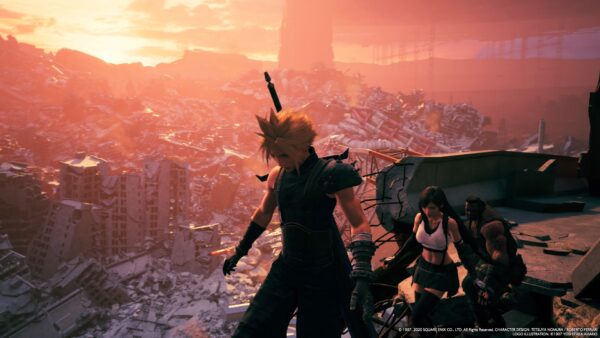
Besides the slums, there are also long winding routes in underground sewers and tunnels, in Shinra’s mako reactors and facilities with many levels to traverse.
With plenty of enemies, obstructions and tempting orbs of Materia placed just out of reach, Cloud’s party needs to solve puzzles in order to advance, such as operating mechanised hands, triggering moving platforms and even picking up or switching out party members to flip switches or pick up Materia in hard to reach places.
The game has many optional side quests that seem to deliberately lead you from one end of the map to another, and timed such that you have to go back and forth the same routes several times on foot.
Some of the non-value added side quests require Cloud to kill rats and other assorted vermin, fetch items and look for lost cats, kids and Chocobos.
But since the side quests help in improving Cloud’s standing with the residents and getting more merchant options, which will in turn bring perks such as gear, items and Materia, they should not be neglected.
It also doesn’t help that fast travel by way of Chocobo carriages are unlocked only more than halfway through the game, when most of the trudging through the slums across various sectors and revisiting the areas for optional quests are already done.
Ironically, it is the searching for the lost Chocobos quest that needs the most travelling. That’s literally closing the stable door after the Chocobo has bolted.
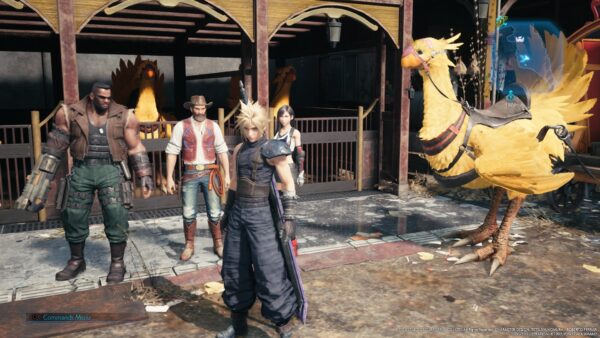
There is are some comic relief from the endearing characters (mostly Barrett) as well as silly mini games like smashing boxes, performing squats and pull-ups at the gym and an over the top “dance off” challenge, which add some humour to the game.
There are also opportunities for more in-depth exploration of the characters, such as visiting Jessie’s home and places from Aerith’s childhood.
Midway into the game, the story gets more interesting – also because there are higher stakes for the characters. In the later chapters, the party gets a chance to explore the impressive and elegant Shinra HQ with a compulsory museum tour that provides more background about mako and Shinra. Here, you see the terrifying experiments they are conducting.
This is also where you get to meet the wolf-like Red XIII, who was a full-fledged party member in the original FFVII game but now serves only as a party companion in Remake.
And unlike the slow start to the game, the last few chapters are a pure adrenaline rush with battles waged on the rooftops, thrilling road wars with Cloud on a motorcycle, and a showdown with a super cool one-winged villain in an out-of-the-world location.
Of Gear and Combat
Unlike the original, FFVII Remake is a lot more generous in giving the party access to weapons, armour and accessories, as well as consumables such as health potions, antidotes, ethers and phoenix downs which are essential for bringing party members back to life.
These can be found in boxes, chests, merchants and vending machines placed strategically around the maps. Benches where the party can catch a breather and recover full health and magic points are also thoughtfully placed near the location of a boss battle.
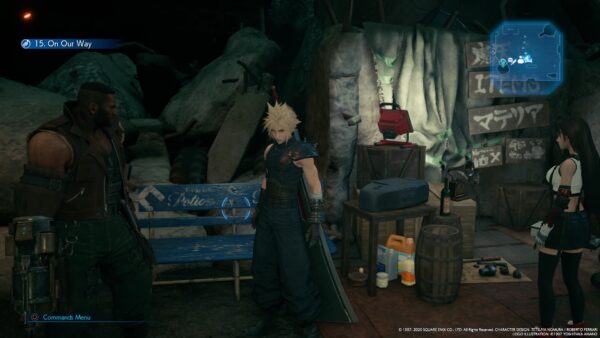
A well equipped party is crucial in beating the enemies in FFVII Remake, and the choice of weapons and the Materia to place in them also play a part.
For those not familiar with Final Fantasy, Materia are coloured orbs that can be inserted in weapons and armour that imbue them with different offensive and defensive properties, and also determine what spells the characters can cast. Some slots are linked so that certain types of Materia can enhance the effects of others.
Weapons for all party members can also be upgraded using Skill Points (SP) that the characters earn through weapon use in combat, and this needs to be done each time the character changes a new weapon.
An unnecessarily dramatic and overly elaborate interface inspired by planets that lets you manually upgrade the weapon’s core. Eventually, I got lazy and opted for auto-upgrade of the weapons since better ones come along pretty often in the game.
Although rank-and-file enemies in FFVII Remake are generally manageable by simply bashing through them, boss battles are something else.
Most boss battles require some thought and pre-planning for the entire party. For instance, one might need to adjust Materia allotment and the spells that can be casted by different party members, as well as the choice of weapons.
In addition, characters like Ifrit, Shiva and Chocobos can also be summoned to lend a hand in battle if their Materia are allotted in weapons with a special slot to hold them.
With high frequencies of tough and lengthy boss battles, one cannot be over-prepared. Many boss battles will require you to play the party to their strengths.
Barrett’s ranged weapon, Tifa’s speedy close up attacks, Cloud’s powerful limit moves and Aerith’s magical abilities offer plenty of options in strategies and tactics to experiment with.
Also, you can select which party member to manually control during the battle, and this is an important tactic for dealing with bosses that switch tactics at different phases of the battle.
One of the more difficult and annoying bosses is a house. Yes, it’s a so-called Hell House that switches its elemental states, is impervious to physical attacks, rolls on wheels, flies into the air and sucks in your party for a good bashing. It took me a while to overcome.
Another awful boss is the cute but deadly Tonberry, a much dreaded enemy in the world of Final Fantasy as its special move is bestowing instant death upon your party members.
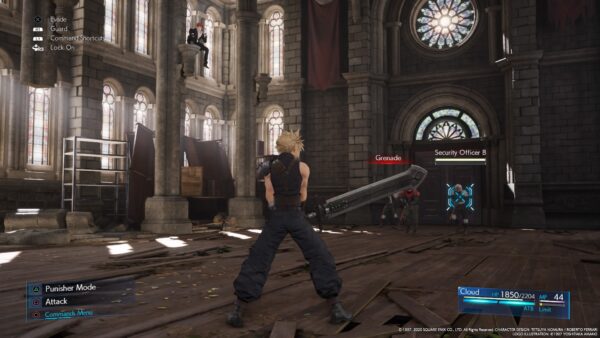
FFVII Remake features an innovatively updated combat system, which is an improvement over the original’s turn-based combat.
Party members can use a standard attack or perform a block as actions that help to fill their ATB (Active Time Battle) gauge. Once the ATB is filled, they can perform a specific action, such as using a special ability, casting a spell or using an item.
This helps in making battles a lot more fun than the original. Back then, party members have to stand around while waiting for their ATB to fill before attacking.
I personally prefer the combat system in Remake as it reduces the waiting around for characters to perform an action, but it does take some getting used to. There is also an option to switch to the “Classic” mode for JRPG purists but I prefer the new combat system.
What is lacking in Remake is the satisfying victory fanfare that plays in the original after winning a battle. You have to settle for Barrett’s vocalisation of the fanfare in Remake.
Seeing old friends with new eyes
The best part of FFVII Remake is seeing the beloved main characters – Cloud, Barrett, Tifa and Aerith – rendered in absolutely stunning and beautiful detail.
I am a little disappointed by Cloud’s arms as they look more sinewy than I would have imagined, but Barrett’s muscles are a sight to behold.
As for the ladies, their expressive eyes and even more expressive hair are just a joy to see. FFVII Remake’s cinematic cutscenes are worth playing through the game just to see the story told in its full high definition glory.
Ironically, FFVII Remake does not include a photo mode, which is such a shame since the landscape for Midgar has been so beautifully reimagined and looks so impressive even when viewed from the slums.
There are so many Instagram-friendly shots I would love to have taken had there been a better way to position the camera in-game.
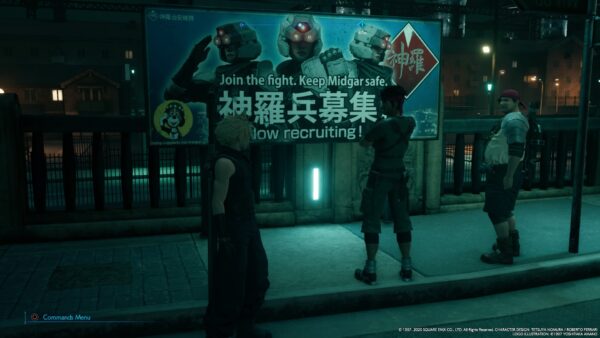
Just as important as the characters’ looks are their voices. FFVII Remake’s voice acting in English is top notch, with my favourites being the voices of Tifa and Barrett that portray Tifa’s emotions and Barrett’s funny one-liners so well. Some voices may even sound familiar since many are established actors in popular games, movies and TV series!
As for the music, I must say the original FFVII soundtrack composed by the legendary Nobuo Uematsu is one of the most memorable and iconic soundtracks ever.
In Remake, however, much of the original soundtrack is featured mostly in remixed or restyled versions. They come in the form of collectible music discs via records that you can obtain from merchants, music enthusiasts or vending machines.
Sadly, there are some unfortunate remixes which make me yearn for the simpler and more coherent original MIDI tunes (which are thankfully available on Spotify here).
It could be that the soundtrack was so emotive in the original because of the lack of audible dialogue – you spend hours reading the conversations in speech bubbles while listening to the score when playing the game. But in FFVII Remake, the dialogue takes precedence, perhaps distracting the ears from the music in the background.
TL;DR
Playing FFVII Remake as a fan of the original is like a reunion with old friends. It’s such a treat to see the much beloved characters so expressive in high definition animations and well-voiced audible dialogue, and with blockbuster worthy cinematic cutscenes.
I love how the world we saw in low res has been reimagined to this grand yet dystopian landscape with so much more to explore.
Battles are also much improved and more fun than the previous turn based gameplay. However, the game is marred by the overly draggy and deliberately long-winded gameplay in the first half. Fortunately, the pace picks up midway and speeds towards an adrenaline-charged finish.
For fans of the original, I would say go play FFVII Remake and just endure the long walks and countless boss battles. After all, if you made it through the endlessly repetitive battles of the original, this is literally a walk in the park.
But without the nostalgia, FFVII Remake might find it difficult to hold the attention of the uninitiated with its frequent back and forth, long distance trudging in the early part of the game.
If you appreciate a great story and characters that look and sound good, do play FFVII Remake, available for PlayStation 4 for S$80.10.
But if you don’t mind playing the original 2013 game or can’t wait to see how the story unfolds, you can get the PC version on Steam for S$14.99.






